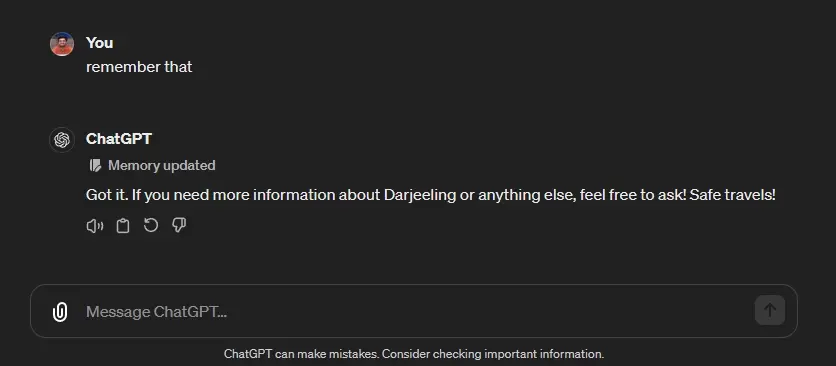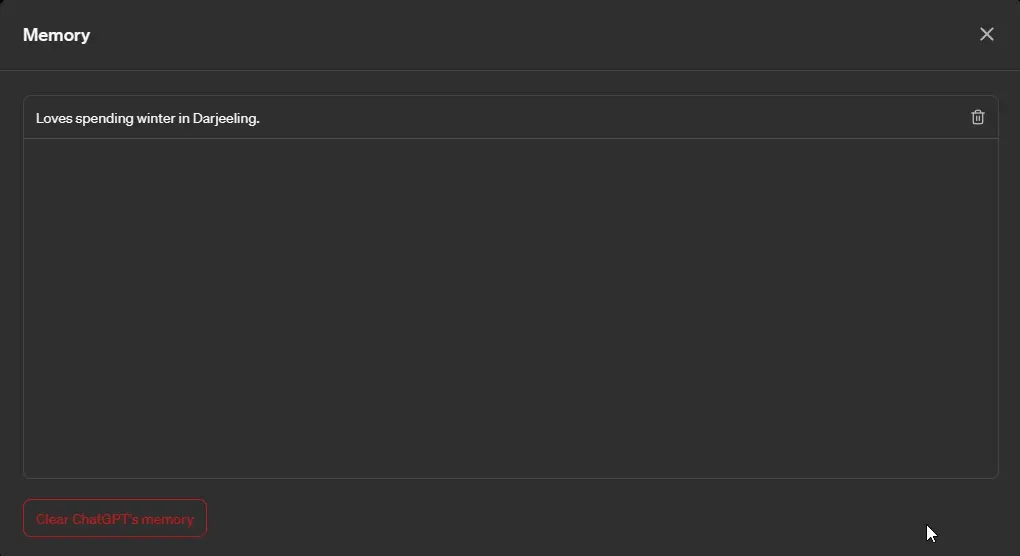
In February, OpenAI introduced a ‘Memory‘ feature designed to remember key details and preferences across all your chats. Now, this feature is being rolled out to all paid ChatGPT Plus users, aiming to enhance the chat experience and act as a personalized assistant.
For instance, ChatGPT can now recall preferences such as your love for traveling, your preference for bullet points in summaries, a preference for concise answers, and more. From general preferences to specific personal details, the Memory feature can retain a wide range of information and use it to provide more personalized responses during chats.
The feature is activated by default, and ChatGPT automatically updates its memory when it encounters such information in chats. You’ll see a “Memory updated” dialog whenever it remembers something. Additionally, you can manually save information for future chats by writing “remember it” in your prompt.

However, you have the option to disable the Memory feature in ChatGPT. Some users may prefer not to have ChatGPT remember personal details due to privacy concerns. You can simply say “forget” when it updates its memory or manage all your memories and delete them from the settings menu. To manage memories, navigate to Settings -> Personalization.

To enhance the personalization of ChatGPT, OpenAI previously introduced Custom Instructions, allowing users to add details about themselves to help ChatGPT better understand them. With the addition of the Memory feature, ChatGPT is set to become even more personalized.
It’s important for ChatGPT users to be aware that all their chats are used for model training by default. However, there is a secret method to opt out of ChatGPT model training. For detailed instructions, follow our linked tutorial.
For privacy-conscious users, it’s important to take proactive steps to ensure that their personal data does not become part of the training dataset. Companies are increasingly seeking various types of data, including synthetic data, to train their models.




